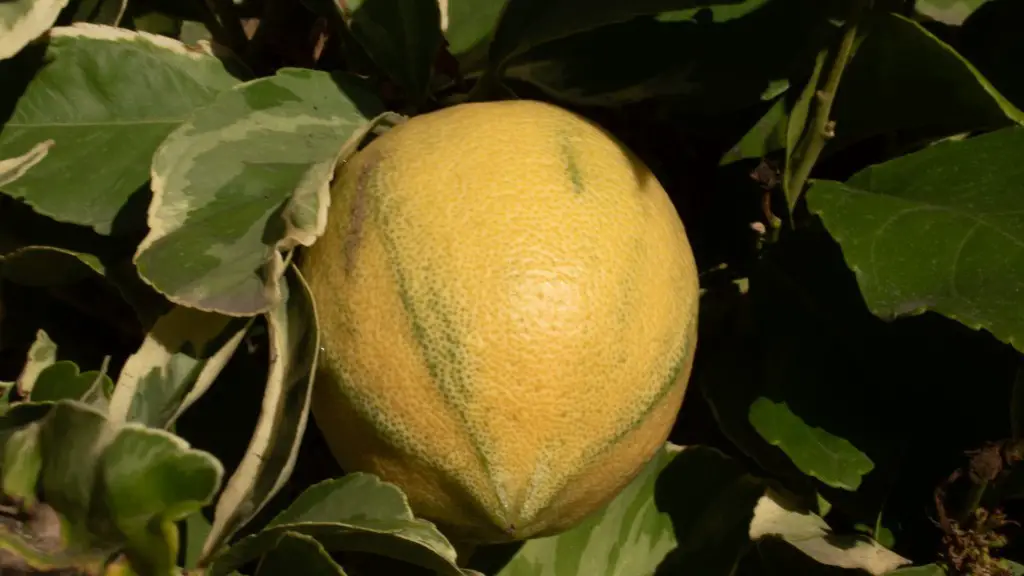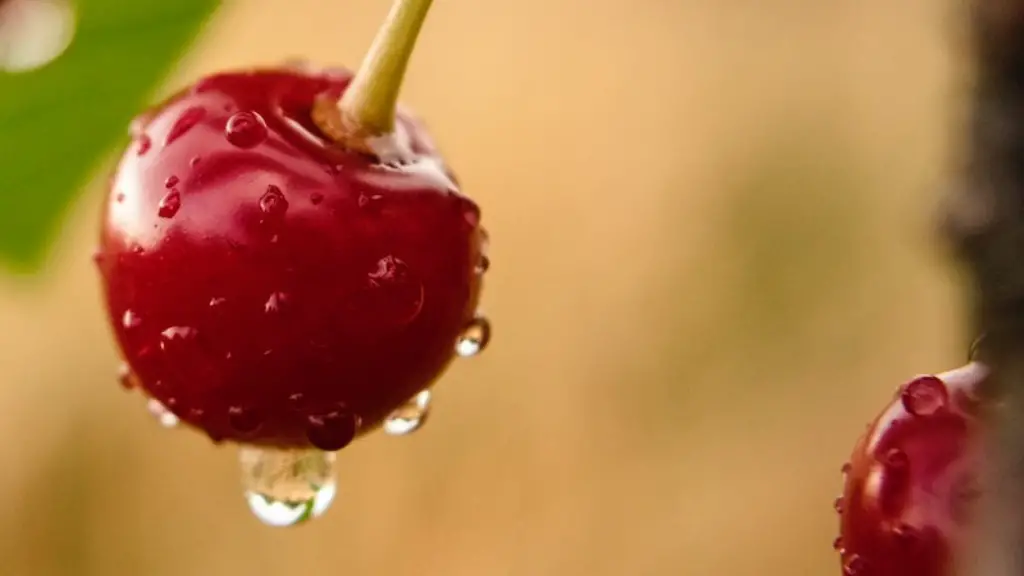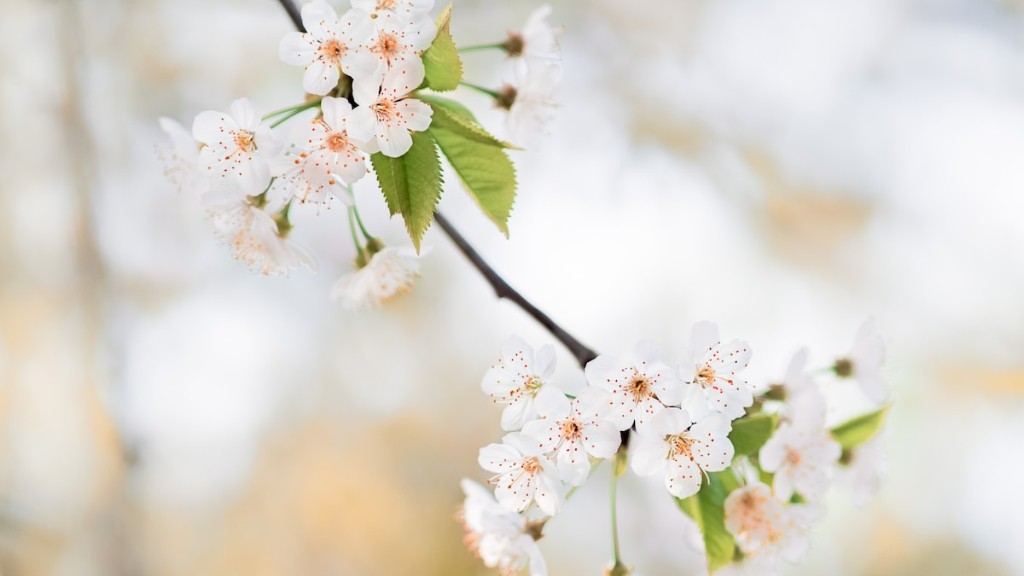Can you grow a small lemon tree indoors? Absolutely! With proper care and attention, you can grow a healthy and productive citrus tree right in your own home. Here are a few tips to get you started:
First, select a pot of adequate size. A pot about 18 inches in diameter should be sufficient for a smaller lemon tree. Ensure the pot has a drainage hole and saucer, as citrus trees require regular watering but do not tolerate soggy soil.
Second, use well-draining soil. You can create a mixture of two parts perlite to one part soil. This will help your lemon tree’s roots to remain moist but not soggy. You can also add some slow-release fertilizer for additional nourishment.
Third, place your lemon tree in a warm spot near a south-facing window. This will ensure it gets plenty of sunlight, as citrus require plenty of direct sunlight to thrive.
Fourth, water your lemon tree regularly. Allow the top inch of soil to dry out between waterings and make sure you’re not giving it too much water. Monitor the soil moisture with your finger and water when necessary.
Fifth, fertilize your tree every three months with a balanced citrus fertilizer. This will ensure it gets the nutrients it needs to be productive.
Finally, prune your lemon tree when necessary to promote its growth and health. Pinch off any dead or damaged branches and shapes its canopy for better growth.
How Do You Care For A Lemon Tree Indoor?
To keep a lemon tree healthy indoors, regular care is essential. This includes providing adequate water and light, fertilizing and pruning, as well as monitoring for signs of pest infestations or disease. Here’s what to do:
First, water your lemon tree when the top inch of soil begins to dry out. To test soil moisture, insert a finger and check if it is dry. Make sure you don’t over-water, as too much water can cause root rot. Allow excess water to drain and never leave standing water in the saucer.
Second, place your lemon tree in a warm spot near a south-facing window and ensure it gets plenty of direct sunlight. Citrus require direct and consistent light to thrive. If conditions are too dark or cold, your tree may become leggy and weak.
Third, fertilize your lemon tree every three months with a balanced citrus fertilizer. You can find these at your local garden center or online. This will ensure your lemon tree gets the nutrients it needs to be productive.
Fourth, prune your lemon tree when necessary to promote its growth and health. Pinch off any dead or damaged branches and shapes its canopy for better growth. Before you prune, sterilize a pair of pruning shears with rubbing alcohol.
Fifth, watch the foliage of your lemon tree closely for signs of pests such as aphids, scales, or mites. If you find pests, take immediate action to rid your tree of them. You can wipe them off with a damp cloth or treat the tree with an organic insecticidal soap.
Finally, watch for signs of disease such as leaf spot, leaf drop, or yellowing leaves. If you notice any of these signs, contact an experienced arborist for advice.
How Long Does It Take To Grow A Lemon Tree Indoors?
Growing a lemon tree indoors takes time and patience. While the amount of time varies from tree to tree, it usually takes a few years, depending on how well-cared for it is. This time is necessary for the tree to establish itself, mature and begin to produce fruit.
First, upon purchasing your tree, make sure to repot it in a larger pot with well-draining soil. This will provide your tree with plenty of space to put down roots and begin to grow. Add a slow-release fertilizer to encourage growth.
Second, ensure your tree is getting enough light and water. Citrus trees require plenty of sunlight to thrive and should be placed in a south-facing window. Water when the top inch of soil begins to dry out and monitor for signs of pests or disease.
Third, Continue to fertilize every three months and prune when necessary. You may notice some leaf drop and yellowing during the first year, but this is normal as your tree develops. You may also see some fruit in the second or third year.
Fourth, keep in mind that your lemon tree may not produce fruit for several years. This is normal, as citrus trees generally don’t start to bear fruit until about year four or five. However, if you’re patient and attentive, you can expect a beautiful and productive lemon tree.
Finally, be sure to enjoy the process! Growing a lemon tree can be an exciting and rewarding experience. Not only will your tree produce delicious citrus fruits, but it will also bring beauty to your home.
What Is The Best Soil For Growing A Lemon Tree Indoors?
When growing a lemon tree indoors, it’s important to use a well-draining soil. Too much water can cause root rot, which can damage and even kill your tree. You can create your own soil mixture by combining two parts perlite to one part soil. This will help keep the soil moist but not too soggy.
First, select a good-quality potting soil that is light and slightly acidic. A pH of 6.5 is ideal. If you can’t find pre-mixed potting soil, you can mix your own by combining one part garden soil, one part peat moss, and one part sand or perlite.
Second, incorporate some slow-release fertilizer to the soil. This will help the tree get the nutrients it needs to be productive. You can find slow-release fertilizers at your local garden center or online.
Third, when potting your lemon tree, make sure the soil isn’t packed down too tightly. Fill the pot about three-fourths of the way up with soil and then add water until it drains out the hole at the bottom. This will help ensure your lemon tree gets enough oxygen to its roots.
Fourth, monitor the soil for moisture. If it feels too dry or too wet, make adjustments accordingly. To test soil moisture, insert a finger and check if it is dry. If it is, it’s time to water your tree.
Fifth, amend the soil with compost, manure or other organic materials. This will provide additional nutrition to your lemon tree and encourage continued growth. Make sure the soil is well-aerated and amended each time you repot.
Finally, if you’re worried about soil nutrient levels, you can use a soil test kit to monitor your soil’s pH and nutrient levels. This can help ensure your lemon tree stays healthy and productive.
How Much Sunlight Does A Lemon Tree Need Indoors?
Citrus trees need plenty of sunlight to produce healthy fruit and grow well. When growing a lemon tree indoors, it’s important to place it near a south-facing window that gets plenty of direct sunlight. This will ensure your tree gets enough light throughout the day.
First, consider a spot near a window or patio door. This should provide your tree enough light to thrive. Citrus trees need at least six hours of direct sunlight each day. If possible, aim for eight to ten hours of direct sunlight.
Second, if you don’t have a south-facing window, you can use grow lights to supplement your tree’s light. These lights come in a variety of sizes and shapes and can provide your tree with all the light it needs.
Third, you may also want to consider a sunny spot outside for your lemon tree during the warmer months. Citrus need to experience cold temperatures for several weeks during the winter, so it’s best not to keep your lemon tree outside at night.
Fourth, keep an eye on the foliage of your lemon tree. If it begins to yellow or new leaves are emerging pale and yellow, your tree isn’t getting enough sunlight. Move your lemon tree to a brighter spot and prune any offending branches.
Fifth, if you notice any leggy growth, it may be a sign your tree is getting too much light. To prune the leggy portions, make sure you use a pair of clean and sharp pruning shears. Be sure to sterilize them with rubbing alcohol before and after use.
Finally, remember that citrus trees need plenty of light, but not too much. Find the perfect spot near a window or patio door and then monitor your lemon tree closely for signs of too much or too little light.





